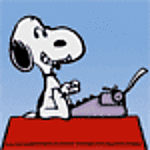1⁄35
Texturing AFV Surfaces

 |
Texturing Armour (continued) |
After texturing you can add some scratches and dents to
the still soft plastic to improve the “realism” effect. I am using a blade
or tweezers for this effect. More heavy damages are performed with a
soldering iron.
When working with resin, white metal or "mixed configurations" I am using
Italeri glue thinned with Squadron White putty or Tamiya putty to resemble
the texture. I had so far no accident that this texture is detaching from
such a surface. You can also use this Putty/Glue method for resembling
"heavier" texturing. You can use this layer also, but very carefully on
enamel painted AFV’s which need to be “restored”.
Some guys are using Acetone and Tamiya Putty for texturing. To me this has
several disadvantages. The Italeri/Squadron/Tamiya Putty method is already
challenging nose, throat and eyes, but Acetone/Tamiya Putty is a real
"killer'. Also Acetone is evaporating very quickly and you have to work fast
to avoid a putty caked surface.
It is my impression that paint fixes easier to such a textured surface and
also the filter settling comes along smoother. Drybrushing is easier as the
paint "is caught" at the "raised" texture. So after all you get a very
delicate looking model in the end. There is another
method of texturing by using a drill with a dental burr. One must be very
careful using this method. If you do not work concentrated you can easily
drill an unintended hole or damage other parts of the kit or create a dent
which doe not look realistic. You also must take care to work asymmetrical
to avoid a too uniform pattern. Burring is creating dust and especially when
working with resin the fun ends and a mask is vital.
As I painted my kits with brush for 20 years I can say that I am quite used
to handle a brush and therefore prefer the glue method for texturing. Just
take care that the brush does not loose hair which then is stuck in the
texture. Copyright ©2002 - Text by Werner Kampfhofer (tankbuster).
Photos by Hannelore Zajic, Wolfram Bradac, Robert J. Sladek, and Tankbuster. All Rights Reserved. |

|
About the Author
About Werner Kampfhofer (tankbuster)
Copyright ©2021 by Werner Kampfhofer. Images and/or videos also by copyright holder unless otherwise noted. The views and opinions expressed herein are solely the views and opinions of the authors and/or contributors to this Web site and do not necessarily represent the views and/or opinions of Armorama, KitMaker Network, or Silver Star Enterrpises. All rights reserved.
















